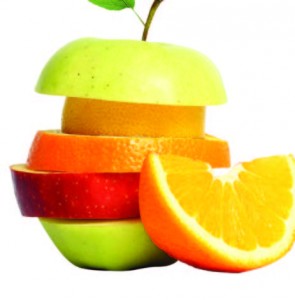Living the Sweet Life
Q: I’m a sugar addict, and I especially love those caramel sufganiyot around Chanukah time; I look forward to them all year. But as I’m getting older, I’m more worried about what I’m doing to my body. Is sugar really as evil as all the health nuts make it out to be?
A: Well, it depends which “health nut” you’re asking. Physician and public health advocate Dr. David Katz penned a response to Gary Taubes’ article “Is Sugar Toxic?” (New York Times, April 13, 2011) entitled “Sugar Isn’t Evil: A Rebuttal” (Huffington Post, April 18, 2011). But as we learn more about chronic diseases and the role sugar plays in their development, it becomes clear that sugar is far from an innocent victim of bad PR.
Sugar, especially white sugar, is the new pariah, replacing carbs on the nutrition hit list, which had previously replaced fat. Today it’s not uncommon to find people eschewing soda—diet and regular—and sweetened cereals in favor of cheeses and nuts as snack foods. And for good reason. Eating too much sugar has been linked to chronic diseases like diabetes and heart disease, as well as to high levels of triglycerides.
Sugar consists of what we call “empty calories”—calories that don’t come with any nutrients. Eating lots of empty calories is likely to lead to weight gain. A recent meta-analysis of thirty-two different studies shows that drinking sodas or other beverages sweetened with sugar is associated with weight gain in both children and adults. But even if excess sugary foods don’t lead to weight gain, they displace other, better-for-you foods. The more added sugars you eat, the less wholesome items your diet is likely to contain.
The average American consumes twenty-three teaspoons of added sugar every day—the equivalent of 368 extra calories, calories that provide no nutrients of value.
On the other hand, sugar is our most basic need. Glucose is what our bodies run on, and we’re hard-wired from birth to prefer sweet foods, starting with breastmilk. The problem is, we eat too much sugar, especially “added sugar”—those that aren’t found naturally in foods but are added in the manufacturing process to make the product more desirable. Sugar is showing up in foods you wouldn’t expect, like tomato sauce, bread or yogurt—foods that don’t even taste that sweet. According to the Center for Science in the Public Interest, the average American consumes twenty-three teaspoons of added sugar every day—the equivalent of 368 extra calories, calories that provide no nutrients of value. Based on a typical 2,000-calorie-a-day diet, that’s almost 20 percent of calories that are basically worthless.
People like to differentiate between sugar and high fructose corn syrup or any of a multitude of sweeteners, including honey, molasses, agave nectar, et cetera. While they vary in caloric content because of differences in weight—honey, for example, contains twenty-two calories per teaspoon while a teaspoon of white sugar has sixteen—they’re all equally devoid of nutrients. Sure, some people may react better to one sweetener over another; agave, for example, has a reputation for being “healthier,” for causing lower rises in blood sugar and for helping people feel satisfied with smaller quantities of sweetener. But agave is comprised mostly of fructose (88 percent), which may be tied to even more negative health effects than glucose.
To answer your question, eating one jelly doughnut—or even caramel-filled doughnut—once a year isn’t going to do serious damage. But having one every night of Chanukah, on top of an already-high sugar diet, is a recipe for weight gain and increased risk of undesirable health conditions. The American Heart Association recommends limiting intake of added sugars to no more than six teaspoons per day for women and no more than nine per day for men.
To keep your sugar consumption under control, try the following:
- Start reading food labels to become familiar with sugar content; it’s listed below “Total Carbohydrates” on the Nutrition Facts panel.
- Check the ingredient list for sugar in any form (including cane syrup, dextrose, rice syrup, glucose and invert sugar, to name a few), and note where it appears on the list. The closer to the top of the list, the more sugar the product contains.
It will probably be a challenge, at first, to cut down on your intake of added sugars. But as you persevere, you’ll notice your preference for very sweet things start to wane, and it will become easier and more natural with time.
Shira Isenberg is a registered dietitian and writer in Memphis, Tennessee. She has a master’s degree in public health nutrition from Hunter College in New York.
 What about Fruit?
What about Fruit?
While fruits are naturally high in sugar—a large apple, for example, contains upwards of twenty grams of sugar—they’re a far cry from foods with added sugars, say researchers like Dr. David Ludwig, director of the New Balance Foundation Obesity Prevention Center at Boston Children’s Hospital. Unlike most foods with added sugar, which tend to be highly processed, fruit contains fiber which helps slow the absorption of sugar into the bloodstream. Instead of causing adverse effects, research shows that eating fruit is actually linked to healthier weights and decreased risk of chronic diseases.
Include a variety of fruits in your diet, but be careful not to overdo it. Even though fruit is quite healthful, it still contains calories. A good goal is somewhere between two and four servings of fruit per day. And stick to whole fruit, versus juice, whenever possible.
What’s the Difference Between “No Added Sugar” and “Sugar-Free”?
When a product is labeled with “no added sugar,” all it means is that no sugar was added during processing. It does not make any claim about the total sugar content of the product. For example, grape juice with “no added sugar” may still contain more than thirty-five grams of sugar per eight-ounce serving, since it’s a product that’s just naturally high in sugar. A “sugar-free” product, on the other hand, must contain less than 0.5 grams of sugar per serving. Sugar-free products, however, often contain sugar substitutes.

